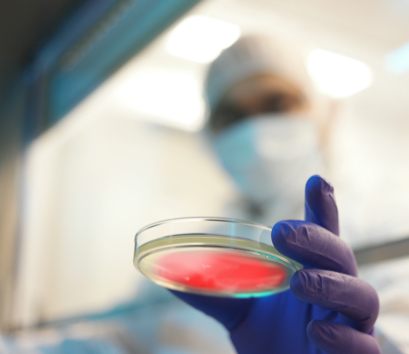Induced Pluripotent Stem Cell Core
The Induced Pluripotent Stem Cell (iPSC) Core (David and Janet Polak Foundation Stem Cell Core Laboratory) at the Board of Governors Regenerative Medicine Institute uses the latest techniques to reprogram, expand and characterize human iPS cells from human skin or blood tissues of healthy subjects and diseased patients.
We then turn the iPS cells into specific cells of the human body, including components of the nervous system, eyes, blood, bones, heart, gut, liver and pancreas, for use by researchers. Some applications of this technology include human “disease modeling-in-a-dish,” developing human reporter cell lines via genetic modification, drug screening on pathological human cell types and potentially developing cell replacement or regenerative therapies.
The IPSC Core is involved in many projects including:
The Answer ALS project entails creating up to 1,000 unique stem cell (iPSC) lines from ALS patients and healthy controls. These stem cells and their derived cells of the brain and spinal cord can be used to model the disease on a large scale, across many variations of ALS. This will allow scientists a deeper look at the mechanisms of a fatal neurodegenerative disease like ALS. To learn more about the Answer ALS project, please visit answerals.org.
Cedars-Sinai is leading the generation of these unique iPSCs and their derived motor neurons from blood of patients collected across multiple clinical sites in the U.S. along with deep clinical data. These cells will be used in big data projects and large-scale omics investigations. The AnswerALS Data Portal contains aggregated metadata and associated data from the AnswerALS research project. Bulk data download is available upon request. We will continue to upload data to the portal for distribution as it is released.
The Answer ALS project cell lines are generated using nonintegrating episomal plasmids and are maintained in a feeder free environment. Each line will be accompanied by a Certificate of Analysis that contains important information pertaining to each cell line (i.e., culturing information and characterization results).

NIH LINCS Program
By generating and making public data that indicates how cells respond to various genetic and environmental stressors, the LINCS project will help us gain a more detailed understanding of cell pathways and aid efforts to develop therapies that might restore perturbed pathways and networks to their normal states. The LINCS website is a source of information for the research community and general public about the LINCS project. This website along with the LINCS Data Portal contains details about the assays, cell types and perturbagens that are currently part of the library, as well as links to participating sites, data releases from the sites and software that can be used for analyzing the data.
Lothian Birth Cohort
The neurobiology of cognitive ability and its decline during ageing are poorly understood. Human iPSC lines from the Lothian Birth Cohort 1936 comprise individuals with rich life-course cognitive performance data (Taylor et al., 2018, Wardlaw et al., 2011), affording a rare model to investigate molecular mechanisms relevant to differences in brain development, cellular resilience, and vulnerability to pathology.

Browse Cell Line Catalog
Hundreds of already established lines spanning over 30 degenerative diseases.

